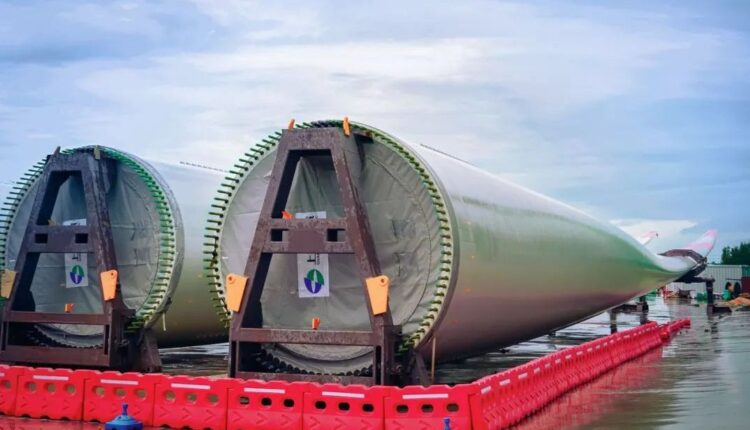Replacement Cost Of Wind Turbine, In the next few years, offshore wind power will play an important role in the global energy transition. In fact, according to Wood Mackenzie’s analysis, from 2021 to 2030, the global offshore wind power industry will add nearly 221 GW of new capacity. However, despite the robust technical structure, maintenance activities will begin to increase as the operating fleet ages. By the end of 2020, only 1.8 gigawatts of global production capacity had been in operation for more than 10 years. As 2030 approaches, this number is expected to increase to more than 20 GW.
Biggest uncertainty in the Replacement Cost Of Wind Turbine operation and maintenance (O&M) is Major component replacement (MCR) currently requires the assistance of a jack-up vessel (JUV).
In the current ten years, there will be nearly 10,000 major wind turbine components in the world (excluding China) that need to be replaced or repaired. The vast majority of this activity will be concentrated in Europe, which is the world’s largest operation and maintenance market. According to Wood Mackenzie’s data, the region currently accounts for 85% of the global MCR market share, and the market value will grow at an annual rate of 10% to reach €518 million by 2030.
What does this mean for jack-up ship operators?
According to our predictions, a staggering € 3.9 billion will be deployed in the European MCR space This is good news for JUV operators, they will get € 1.6 billion opportunities in the industry in this decade.
Offshore wind power has previously been a niche market for the offshore supply chain. Since the price of Brent crude oil plummeted in 2008, more offshore oil and gas service companies have chosen to enter the wind energy industry. The rapid expansion of the supply chain has triggered fierce competition, resulting in a decline in profit margins and putting pressure on the daily rates of ships for offshore wind power projects.
Replacement Cost Of Wind Turbine, The focus on costs, coupled with the growing fleet and weak demand for offshore oil, gas, and wind energy, has significantly reduced the JUV daily rate for the MCR division. In addition, the collapse of oil demand caused by the pandemic has made 2020 one of the worst years in the history of oil refining. The drop in fuel costs and charter rates has led to a significant drop in the cost of JUV in 2020.
Although asset owners have benefited from the decline in JUV prices, JUV operators are forced to sacrifice their profit margins in order to maintain market share in the European offshore Replacement Cost Of Wind Turbine, operation and maintenance industry.

Will oil and gas prices continue to affect the MCR JUV daily interest rate?
The correlation between oil prices and JUV daily interest rates is weakening, and we expect this trend to continue for three key reasons.
First, compared with oil and natural gas, the larger turbine size and harsher field characteristics increase and isolate the requirements for offshore wind power. Therefore, the technical requirements of offshore wind power drive the demand for professional and dedicated ships.
Second, since the oil price crash in 2014, the offshore oil and gas industry has been committed to doing more with less money, thus breaking the link between high oil prices and higher daily interest rates.
Finally, the relative scale of the offshore wind power industry is growing and will account for 30% of the offshore wind power and oil and gas industries by 2025. Offshore wind power will no longer be a niche market in the offshore supply chain, consolidate its independent position to determine the daily rate of joint robots.
Costs, growing fleets and weak demand have drastically reduced JUV daily rates.
What is the future of the MCR market?
The MCR market is highly dynamic, and the industry has a wide range of ship needs, When the installation demand is low, the installer mainly focuses on the MCR space. The installation contract is still the preferred option because the daily rate will be 2 to 4 times higher. Growing demand and the globalization of the offshore wind power installation market will squeeze the supply of JUV in the MCR market, especially next-generation turbines.
How will this affect the owners of offshore wind power projects?
Replacement Cost Of Wind Turbine, The unit MCR cost bottomed out in 2020, but will pick up at the end of this decade, and will increase by 72% by 2030. This is mainly driven by the recovery of large wind turbines and JUV costs. However, the increase in turbine size will offset higher unit costs, resulting in a 35% reduction in MCR costs per MW from 2020 to 2030.
Although the efficiency of MCR incidents has improved, uncontrollable conditions such as weather, distance from the port, availability of ships and parts, etc. have led to large differences in the time required to replace parts. These uncertainties will affect the duration of MCR activities, which means that the spot price of the fleet will vary greatly depending on the specific circumstances. (Replacement Cost Of Wind Turbine)
Replacement Cost Of Wind Turbine including many other factors which will discuss it next week.

